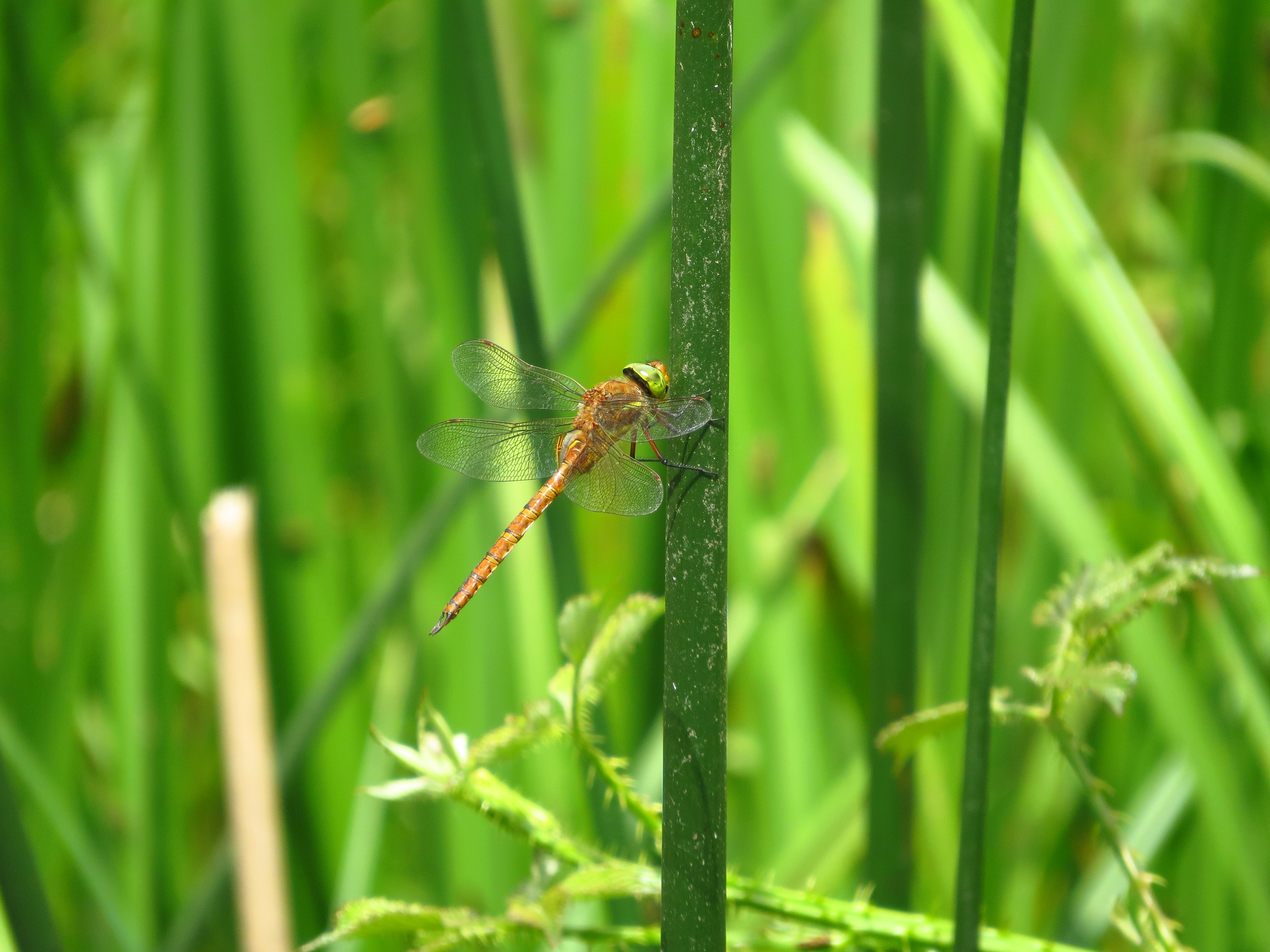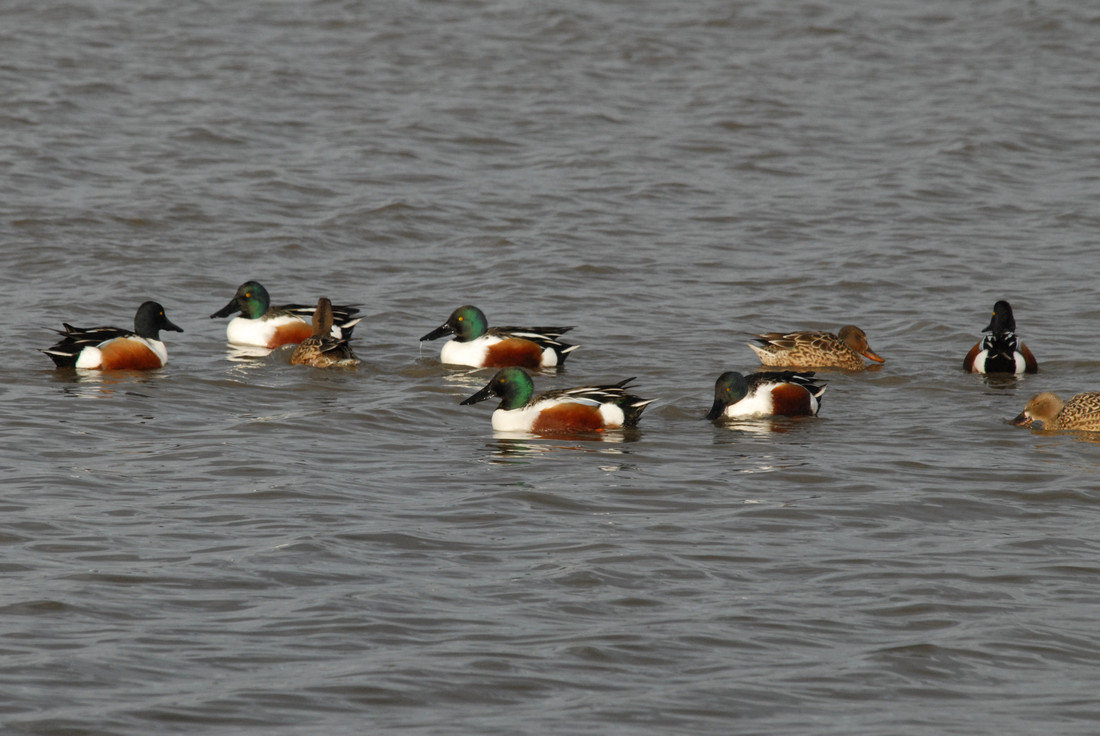Green Sandpiper on the wader scrape
Wader scrape is good this morning for Green Sandpiper, Snipe and duck broods.
2 Black-tailed Godwit - main lake pm
1 Green Sandpiper - wader scrape
1 Snipe - wader scrape
1 Common Tern - main lake
Tufted Duck broods - wader scrape, reservoir lagoon
Pochard brood - wader scrape
1 Peregrine - Charing Cross Hospital perch
1 Little Grebe juv - wader scrape
June/July bird highlights: Snipe, Green Sandpiper, Redshank, Peregrine, Kestrel, Buzzard, Hobby, Little Egret, Common Tern, Mediterranean Gull, Black-tailed Godwit (41 on 30/06/19, second highest count for Surrey), Curlew, Little Ringed Plover.
In late June there are post-breeding (or non-breeding) birds on the move, such as migrant Green Sandpiper and Teal. The wader scrape and muddy pools on the marsh are the best spots to check for migrant and breeding waders. Lapwing have so far managed to fledge 5 young and there are a few chicks on the scrape/marsh still. Sand Martins have occupied 97% of the nest chambers. Tufted Duck, Pochard, Gadwall and Mallard have all had broods of ducklings. The main lake and reservoir lagoon have several Black-headed Gull juveniles. The reedbeds are full of Reed Warbler and Reed Bunting broods, and there's a few Sedge Warblers nesting too. Watch for Hobby hunting dragonflies and Sand Martins over the reserve.
Spring migrant and breeding passerines recorded this year include Chiffchaff, Blackcap, Reed Warbler, Sedge Warbler, Sand Martin, Swallow, Swift, Yellow Wagtail, House Martin, Skylark, Willow Warbler, Garden Warbler, Lesser Whitethroat, Whitethroat and Wheatear.
Invertebrates: (July) Rose Chafer, Honey Bee, Buff-tailed Bumblebee, Yellow-legged Mining Bee, White-tailed Bumblebee, Red-tailed Bumblebee (see 2nd photo below), Brimstone, Comma, Speckled Wood, Peacock, Orange Tip, Small White, Large White, Holly Blue, Red Admiral, Green Hairstreak, Common Blue, White Admiral, Marbled White, Small Heath, Red Willow Leaf Beetle, Wasp Beetle, Fairy-ring Longhorn Beetle, Black-and-yellow Longhorn Beetle, Black-striped Longhorn Beetle, Umbellifer Longhorn Beetle, Click Beetle, Red-headed Cardinal Beetle, Plum Longhorn Beetle, Common Zebra Spider, Hairy Dragonfly, Azure Damselfly, Common Blue Damselfly, Blue-tailed Damselfy, Broad-bodied Chaser, Large Red Damselfly, Norfolk Hawkers (see 1st photo below), Stag Beetle, Scarce Chaser, Marbled White, Ringlet, long-winged Conehead, Wasp Spider, Ruby-tailed Wasp, Waved Black moth (nationally scarce), Blackneck moth.

Flowering plants: (late June) Southern Marsh Orchid, Lesser Celandine, Cut-leaf Cranesbill, Marsh Marigold, Yellow Iris, Cow Parsley, Ragged Robin, Common Mallow, Salad Burnet, Ox-eye Daisy, Poppy, Bird's-foot Trefoil, White Water-lily, Meadow-sweet, Marsh Woundwort, Purple Loosestrife, Common Spotted Orchid, Meadow Vetchling, Ox-eye Daisy, Common Vetch, Pyramidal Orchid, Self-heal, Hop Trefoil, Common Knapweed, Betony, Tufted Vetch, Agrimony, Figwort, Lady's Bedstraw, Branched Bur-reed, Great Burnet, Meadow Rue, Square-stalked St.John's Wort.
Reptiles: Slow Worms (46 juveniles, 19 females, 7 males), 2 Grass Snake (juvenile - see below) - 2nd June survey. Also an adult Grass Snake found asleep under a Pintail nest in world wetlands!


